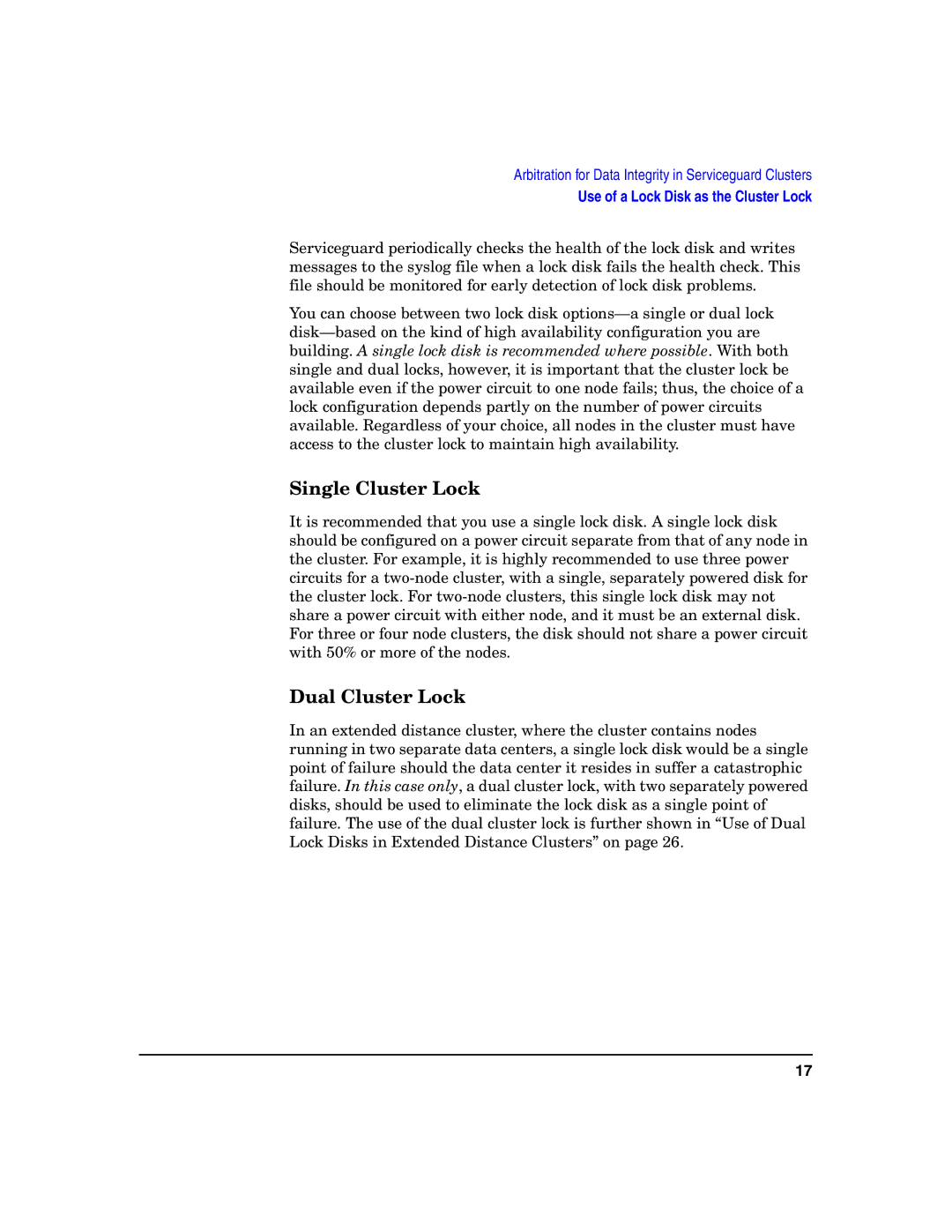Arbitration for Data Integrity in Serviceguard Clusters
Use of a Lock Disk as the Cluster Lock
Serviceguard periodically checks the health of the lock disk and writes messages to the syslog file when a lock disk fails the health check. This file should be monitored for early detection of lock disk problems.
You can choose between two lock disk
Single Cluster Lock
It is recommended that you use a single lock disk. A single lock disk should be configured on a power circuit separate from that of any node in the cluster. For example, it is highly recommended to use three power circuits for a
Dual Cluster Lock
In an extended distance cluster, where the cluster contains nodes running in two separate data centers, a single lock disk would be a single point of failure should the data center it resides in suffer a catastrophic failure. In this case only, a dual cluster lock, with two separately powered disks, should be used to eliminate the lock disk as a single point of failure. The use of the dual cluster lock is further shown in “Use of Dual Lock Disks in Extended Distance Clusters” on page 26.
17
